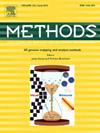利用收缩自编码器进行稳健特征学习,用于癌症亚型中的多组学聚类。
IF 4.2
3区 生物学
Q1 BIOCHEMICAL RESEARCH METHODS
引用次数: 0
摘要
癌症几乎可以发生在任何组织或器官,因此有必要对癌症患者进行精确的亚型分类,以提高诊断、治疗和预后效果。随着海量组学数据的积累,许多研究集中于利用聚类技术整合多组学数据进行癌症亚型分析。然而,由于不同组学数据的异质性,如何提取重要特征以有效整合这些数据并进行准确的聚类分析仍是一项重大挑战。本研究提出了一种用于癌症亚型划分的新型多组学聚类框架,该框架利用收缩自动编码器提取稳健特征。通过鼓励所学表征对微小变化不那么敏感,收缩自动编码器可从不同的组学中学习稳健的特征表征。为了将生存信息纳入聚类分析,我们使用考克斯比例危险回归进一步选择与生存显著相关的关键特征进行整合。最后,我们对整合后的特征进行 K-means 聚类,以获得聚类结果。我们在 10 个不同的癌症数据集上对所提出的框架进行了评估,这些数据集涉及 4 个层次的 omics 数据,并与其他现有方法进行了比较。实验结果表明,提出的框架有效地整合了四个全息数据集,并优于其他方法,获得了更高的 C 指数得分,生存曲线之间的差异也更显著。此外,还进行了差异基因分析和通路富集分析,进一步证明了所提方法框架的有效性。本文章由计算机程序翻译,如有差异,请以英文原文为准。
Robust feature learning using contractive autoencoders for multi-omics clustering in cancer subtyping
Cancer can manifest in virtually any tissue or organ, necessitating precise subtyping of cancer patients to enhance diagnosis, treatment, and prognosis. With the accumulation of vast amounts of omics data, numerous studies have focused on integrating multi-omics data for cancer subtyping using clustering techniques. However, due to the heterogeneity of different omics data, extracting important features to effectively integrate these data for accurate clustering analysis remains a significant challenge. This study proposes a new multi-omics clustering framework for cancer subtyping, which utilizes contractive autoencoder to extract robust features. By encouraging the learned representation to be less sensitive to small changes, the contractive autoencoder learns robust feature representations from different omics. To incorporate survival information into the clustering analysis, Cox proportional hazards regression is used to further select the key features significantly associated with survival for integration. Finally, we utilize K-means clustering on the integrated feature to obtain the clustering result. The proposed framework is evaluated on ten different cancer datasets across four levels of omics data and compared to other existing methods. The experimental results indicate that the proposed framework effectively integrates the four omics datasets and outperforms other methods, achieving higher C-index scores and showing more significant differences between survival curves. Additionally, differential gene analysis and pathway enrichment analysis are performed to further demonstrate the effectiveness of the proposed method framework.
求助全文
通过发布文献求助,成功后即可免费获取论文全文。
去求助
来源期刊

Methods
生物-生化研究方法
CiteScore
9.80
自引率
2.10%
发文量
222
审稿时长
11.3 weeks
期刊介绍:
Methods focuses on rapidly developing techniques in the experimental biological and medical sciences.
Each topical issue, organized by a guest editor who is an expert in the area covered, consists solely of invited quality articles by specialist authors, many of them reviews. Issues are devoted to specific technical approaches with emphasis on clear detailed descriptions of protocols that allow them to be reproduced easily. The background information provided enables researchers to understand the principles underlying the methods; other helpful sections include comparisons of alternative methods giving the advantages and disadvantages of particular methods, guidance on avoiding potential pitfalls, and suggestions for troubleshooting.
 求助内容:
求助内容: 应助结果提醒方式:
应助结果提醒方式:


